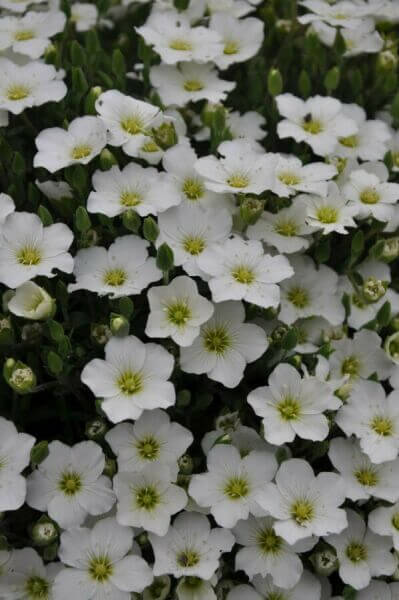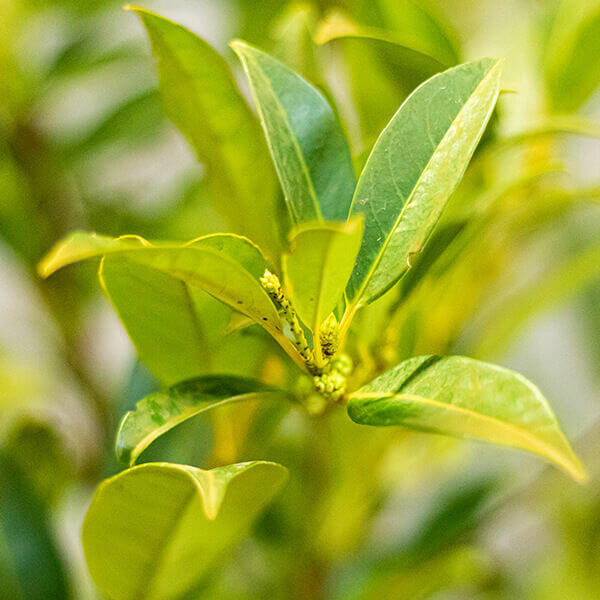Fast-growing Hedge Plants
Enhance your garden's attraction with lush hedge ranges such as Yew (Taxus), Thuja, Laurel, Photinia, and Bamboo, celebrated for their structural stability and ecological benefits.
Yew and Thuja offer evergreen protection and winter durability, while Laurel uses quick growth and broad, fragrant leaves.
Photinia adds seasonal charm with its vibrant red foliage, and Bamboo lends a low-maintenance, peaceful ambiance.
These hedges improve air quality, minimize noise, and produce tranquil, private areas.
Appropriate planting, spacing, and maintenance guarantee energetic development and environmental consistency.
Check out how these rich varieties can elevate your garden's beauty and well-being.
Secret Takeaways
Transform Your Garden With Lush Hedge Varieties
- Select Yew for its thick, evergreen growth and unparalleled longevity.
- Go with Laurel for its quick development and broad leaves, guaranteeing quick privacy.
- Choose Photinia for its vibrant seasonal foliage, which turns a striking dark red.
- Make use of Bamboo for a low-maintenance, winter-hardy hedge with visual appeal.
- Area plants 2-3 per meter and prune routinely for optimal growth and health.
Popular Hedge Plants
When changing a garden with lavish hedge varieties, it's important to consider popular hedge plants such as Yew, Thuja, Laurel, and Photinia due to their special attributes and advantages.
Yew (Taxus) is highly esteemed for its durability and thick, green growth, making it a prime option for sustaining landscapes.
Thuja is noted for its evergreen foliage and robust winter strength.
Photinia includes seasonal vibrancy with red leaves that darken in time, creating vibrant visual appeal.
Laurel provides rapid development and fragrant, broad leaves, ideal for fast privacy.
In Addition, Bamboo is an exceptional choice for atmosphere, providing a low-maintenance, winter-hardy option that boosts the garden's visual with its elegant, swaying walking canes.
These selections deal with a variety of horticultural requirements and preferences.
Benefits of Garden Hedges
Garden hedges provide a wide range of advantages, making them a valuable addition to any landscape. These natural barriers are cost-effective to execute and provide substantial wind protection, boosting air circulation and adding to noise decrease. The dense foliage of hedges like Thuja and Beech guarantees privacy by blocking visibility, producing a remote and peaceful environment.
Hedges likewise play an essential function in microclimate regulation, offering a steady environment that promotes plant development and minimizes temperature level fluctuations. Their complex leaf structures filter toxins, improving air quality and adding to a much healthier garden ecosystem.
Furthermore, hedges master noise decrease, soaking up and deflecting sound waves to lower ambient sound levels. This double functionality of offering both acoustic and visual privacy improves the general harmony and aesthetic appeal of any garden.
Planting and Upkeep Tips
For an effective hedge, meticulous preparation of the planting area is important. Make sure the soil has proper pH and drainage to support strong root advancement.
Area the plants appropriately for the chosen species. Water the hedge often throughout its preliminary growth phase, adjusting as required with seasonal modifications.
Carry out a systematic pest control and disease prevention technique, utilizing natural or chemical treatments when necessary. Routinely examine for aphids, termites, and fungal infections.
Apply mulch to maintain wetness and reduce weeds. Seasonal pruning promotes thick development and air circulation, essential for plant health.
Following these guidelines will help you cultivate a dynamic, well-kept hedge that improves the charm of your garden.
Spacing and Cutting Standards
Spacing and Cutting Standards
Appropriate spacing and cutting are important for cultivating healthy, aesthetically appealing hedges. Appropriate spacing guarantees each plant gets adequate nutrients, light, and air flow.
Follow these guidelines for ideal hedge maintenance:
- Spacing: Position hedge plants 2-3 plants per meter to encourage robust growth.
- Pruning Techniques: Routine pruning is vital for keeping desired hedge height and shape. Cut new growth in summer and cut back older wood throughout winter.
- Seasonal Care: Adjust cutting schedules and approaches according to seasonal requirements to make sure plant health.
- Hedge Height: Routinely screen and trim to maintain the desired hedge height and attain consistent aesthetic appeals.
Complying with these actions will guarantee your hedge flourishes, enhancing both the appeal and functionality of your garden.
Picking the Right Hedge
Selecting the Right Hedge
Selecting the appropriate hedge includes assessing factors such as mature height, foliage density, and ecological durability. Successful hedge plant choice needs understanding each types' development characteristics and site-specific flexibility.
For instance, Yew (Taxus) provides excellent durability and dense development, while Thuja is noteworthy for its winter strength. Furthermore, considering upkeep requirements is essential; fast-growing types like Laurel or Privet demand regular cutting, whereas low-maintenance options like Bamboo or Ivy may be more suitable for those looking for minimal maintenance.
Ecological factors such as soil type, light schedule, and moisture conditions need to also assist the selection procedure. This careful technique ensures the picked hedges will flourish, supplying both functional and visual benefits to the garden landscape.
Shipment and Planting Advice
To guarantee your hedge plants thrive, they must be provided by specialized couriers and planted without delay upon arrival.
Follow these important actions for successful planting:
- Soil Preparation: Enhance the soil with raw material to improve drain and nutrient material.
- Planting Depth: Create a trench two times the width and equivalent to the depth of the root ball.
- Watering Methods: Water completely after planting, keeping the soil regularly moist however not filled.
- Mulching: Apply a layer of mulch to keep wetness and suppress weeds.
Client Assistance and Service
Given the essential function of prompt assistance in horticultural pursuits, our client assistance group is offered six days a week through telephone, email, and social networks to provide professional advice and promptly attend to any concerns. Their commitment to fast action times ensures customer complete satisfaction by fixing questions related to plant health, optimal planting techniques, and upkeep schedules.

Communication Technique
-----------------
6 days a week
Within 2 days
Within 24 hr
This comprehensive support system, reinforced by an outstanding 9.3/ 10 client score, highlights our commitment to improving the gardening experience for each customer.
Often Asked Concerns
For How Long Does It Consider Hedge Plants to Establish?
Hedge plants typically require one to three years to become fully established, with the exact period differing by types and growing conditions.
Reliable care throughout this vital period is important for robust growth. Consistent watering, alert weed control, and proper fertilizer application are essential in promoting strong root advancement.
For example, fast-growing species like Laurel may develop more rapidly, while slower-growing ranges such as Yew might take longer. Diligent upkeep speeds up the facility process, resulting in thick and healthy hedges.
What Are the very best Hedge Plants for Privacy?
The question of the very best hedge plants for personal privacy involves evaluating evergreen and deciduous alternatives.
Evergreen hedges like Thuja, Laurel, and Cypress supply year-round coverage, making sure continuous personal privacy.
On the other hand, deciduous hedges such as Beech provide seasonal privacy, shedding leaves in cooler months.
Secret maintenance tips for personal privacy hedges include regular cutting, fertilizing in spring, and appropriate spacing-- typically 2 to 3 plants per meter.
In addition, consistent watering and diligent weed elimination are essential for promoting healthy, dense development.
Can Hedge Plants Attract Wildlife to My Garden?
Yes, hedge plants can bring in wildlife to your garden by offering essential advantages like shelter, food, and nesting sites, thereby improving regional biodiversity. For circumstances, yew, holly, and laurel are excellent for bring in birds, while ivy supports a variety of insects.
Nevertheless, it's important to keep in mind that there are some drawbacks, such as increased upkeep to manage bugs and regular maintenance. Carefully picking and maintaining hedge ranges can help balance these downsides and benefits, eventually fostering a sustainable and vibrant community in your garden.
Are There Any Flowering Hedge Plants Available?
Yes, there are flowering hedge plants readily available that can enhance the appeal of your garden.
For example, Elaeagnus, likewise understood as Olive Willow, produces fragrant white flowers in the fall, including a touch of elegance.
Photinia, another popular choice, showcases lively red leaves that mature into an abundant green, developing a dynamic visual result throughout the seasons.
To ensure these plants flourish, it's necessary to practice proper pruning methods and seasonal upkeep, such as trimming new development in the summer and cutting down in the winter season.
These measures will help preserve the health and visual appeal of your flowering hedges.
How Do I Prevent Insects in My Hedge Plants?
To avoid bugs in hedge plants, employ natural insect control techniques and keep proper hedge care. Introduce advantageous bugs like ladybugs, which victimize damaging pests, to create a balanced community.
Frequently check your hedges for indications of infestation and quickly get rid of any afflicted parts to avoid the spread. Ensure the health of your hedges by applying balanced fertilizers and providing sufficient water.
Use mulching to keep soil wetness and appropriate spacing to minimize plant tension and promote robust development. These practices jointly assist in decreasing bug concerns and keeping a healthy hedge.
Conclusion
In essence, picking the ideal hedge ranges such as Yew, Thuja, and Laurel can change more info any garden into a serene sanctuary. These plants supply year-round plant, improve aesthetic appeal, and offer practical benefits like sound decrease and wind defense.
Correct planting strategies, precise spacing, constant watering, and seasonal trimming are important for optimal growth.
Dependable delivery services and skilled consumer assistance guarantee a seamless experience from purchase to planting, making it simpler than ever to raise your outside area.
Garden hedges provide a wide range of benefits, making them an important addition to any landscape. These natural barriers are cost-efficient to execute and provide substantial wind defense, improving air flow and contributing to noise decrease. The dense foliage of hedges like Thuja and Beech ensures personal privacy by blocking exposure, creating a tranquil and remote environment.

Pruning Methods: Regular pruning is necessary for preserving preferred hedge height and shape. Trim brand-new growth in summer season and cut back older wood throughout winter.